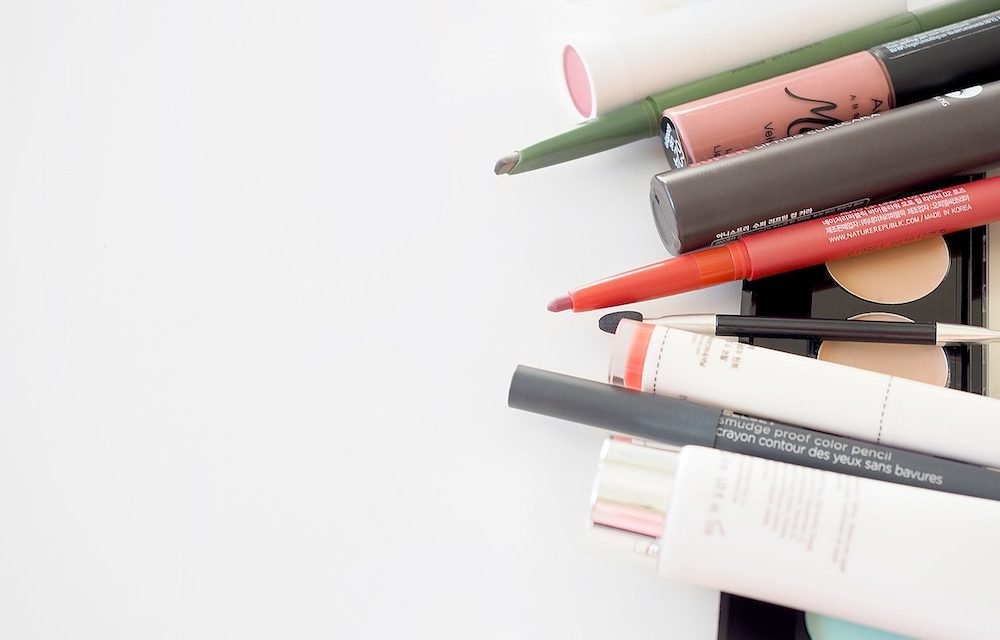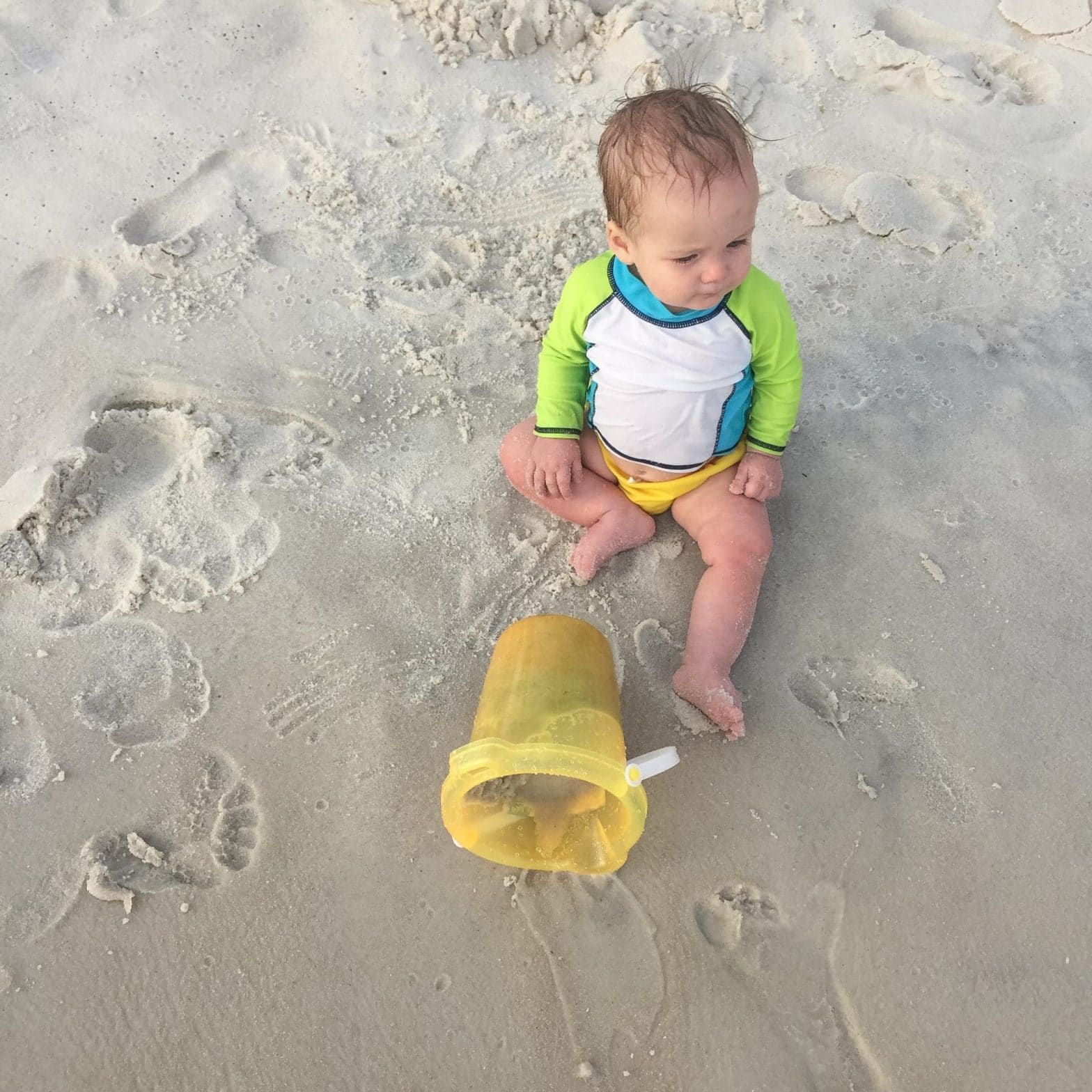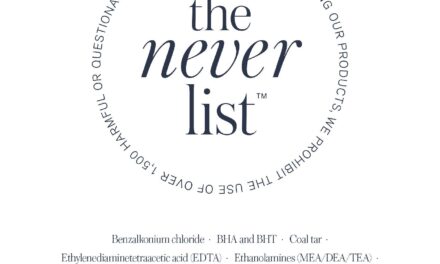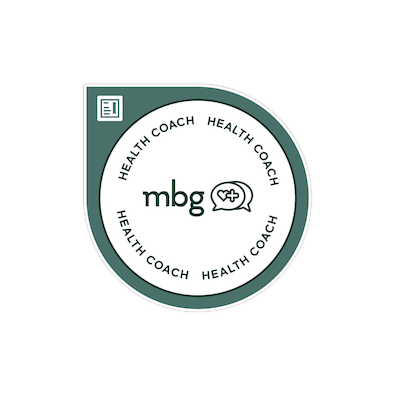I get the question “how do I know if my products are safe?” ALL the time. I’m here to help you answer that question!
As a clean eating and lifestyle blogger, I am passionate about helping people nourish their bodies with wholesome, healthy food. Serendipitously, the more I dove into research on the health impact of what goes into our bodies, the more I began to learn about the importance of what goes on our bodies.
That being said, I really want you to be able to figure out if your products are safe!
Ready to dive in?? Let’s go!
This is your step by step guide to figuring out if the products you are using are safe.
First, why does it matter?
What we put on our bodies- from lotion to hand soap- as well as the environmental “makeup” of the world around us- think things like pollution and that oh-so-strong chemical-filled cleaner lurking under your sink- have a direct impact on our health.
As we go about life, we are constantly bumping into risk factors, or “environmental aggressors.” So many of these factors are outside our control. We don’t have much say (on a large scale anyway) about the chemicals being pumped into the air by major factories.
But we can make choices in the “little” things. We can work to limit our exposure to risk factors in the things inside our control, like the products we use on ourselves and in our homes that may contain ingredients that are harmful to us.
So are you saying that all chemicals are bad?
No! Everything, including our own bodies and the food we eat, is made up of chemicals. Toxic chemicals, however, are bad for us. Toxic chemicals are those that destroy or harm our own cells and organs and cause changes to our biological systems. In the case of cosmetics, toxic chemicals can enter the body through the skin, lips, and nails or be inhaled in (think powder cosmetics or perfumes). It is this kind of exposure that we should try to limit.
Are there real links between toxic chemicals and my health?
Over the last 50 years of medical and environmental health research, there is a growing consensus that exposure to toxic chemicals plays a part in the rise of many health issues in America, including cancer, hormone disruption, infertility, allergies, asthma, and learning disabilities.
Statistics show a rise in some cancers along with mystery risk factors (meaning, there are reasons causing cancer that we still don’t understand):
Did you know that in the United States, one in three women and one in two men will develop cancer in their lifetimes? ((https://www.cancer.org/cancer/cancer-basics/lifetime-probability-of-developing-or-dying-from-cancer.html))
The incidence of some cancers, including some of the most common among children, is increasing in the United States. In fact, childhood cancers have increased by 21% since 1980. ((https://deainfo.nci.nih.gov/advisory/pcp/annualReports/pcp08-09rpt/PCP_Report_08-09_508.pdf)) , ((https://www.cancer.gov/types/childhood-cancers))
One in eight women in the United States will be diagnosed with breast cancer in their lifetime versus 1 in 10 only 40 years ago. Only half of these cases can be tied to traditional risk factors like genetic inheritance, leaving hundreds of thousands of women with unknown factors for contracting the disease. ((https://www.cancer.gov/types/breast/risk-fact-sheet))
Infertility issues have also severely spiked. One of the most concerning issues in personal care product safety is that many traditional products on the market contain ingredients with active properties that can disrupt the endocrine system. That means the products we use can make our hormones imbalanced. I don’t know about you, but I really don’t want to use products that mess with my hormones!!
When our hormones get disrupted, a host of fertility issues can follow suit, and that’s just what we are seeing in medical research:
Difficulty in conceiving and maintaining a pregnancy affected 40% more women in 2002 than in 1982. From 1982 to 1995, the incidence of reported difficulty almost doubled in younger women ages 18-25. ((Chandra A, et al. Impaired fecundity in the United States: 1982–1995. Family Planning Perspectives 1998; 30(1):34-42.)), ((Chandra A, et al. Fertility, family planning, and reproductive health of U.S. women: Data from the 2002 National Survey of Family Growth. National Center for Health Statistics. Vital and Health Statistics 2005; 23(25).))
Today, young girls are hitting puberty earlier than in the past, in part due to childhood and, likely, in-utero exposures to endocrine disruptors, presenting a host of potential health risks including increased risk of breast cancer and depression. ((http://www.breastcancerfund.org/clear-science/pregnancy-childhood-exposures-breast-cancer-risk/childhood-and-adolescence/))
Studies indicate that environmental exposure to toxic chemicals may have an effect on the declining sperm count and testosterone levels in U.S males. ((Swan S H, Elkin E P, Fenster L. The question of declining sperm density revisited: an analysis of 101 studies published 1934-1996. Environ Health Perspect. 2000; 108 961-966.)) , ((Diamanti-Kandarakis E, et al. Endocrine-disrupting chemicals: An Endocrine Society scientific statement. Endocrine Reviews 2009; 30:293-342.))
The fact is that our bodies are incredibly complex and the ways in which we contract diseases is not fully understood. What we do know is that there are data gaps in the safety evaluation of the majority of chemicals on the market and that reducing exposure to harmful or potentially harmful chemicals will lead to a reduction of health risks.
But isn’t my skin a barrier?
Yes! But it’s not that simple, because while the skin does protect the body, it also does absorb what is put on it.
According to the CDC, dermal absorption “is the transport of a chemical from the outer surface of the skin both into the skin and into the body.” ((https://www.cdc.gov/niosh/topics/skin/default.html)) By “into the body” they mean into the bloodstream- which is really important to note when the products you may be using may contain harmful ingredients!
There are a number of factors that will influence how easily a particular chemical can get into the bloodstream including the skin’s integrity (damaged vs. intact), physical and chemical properties of the substance (the smaller the chemical, the easier it will absorb), the concentration of the chemical, the duration of exposure, and the area of exposure.
These factors combined mean that each individual chemical will interact with the skin differently. Some chemicals may penetrate the skin very quickly, especially if they contain penetration aids, substances that many cosmetics on the market contain to help the product get into the body more efficiently. Other chemicals may not penetrate the skin at all.
The important part here is caution: since we know that the skin does absorb much of what goes on it and that once absorbed it makes its way into the blood, we ought to exercise caution!
Aren’t there regulatory laws in the U.S. that protect me?
Take this in for a second. There are currently around 2,800 high-production-volume (HPV) chemicals produced and used extensively in homes, schools, and communities in the United States, and yet less than a third of these chemicals have publicly available safety data and less than 2% have been tested for safety on children. ((https://nepis.epa.gov/Exe/ZyPDF.cgi/7000052X.PDF?Dockey=7000052X.PDF;%20https://www.edf.org/sites/default/files/6653_HighHopesLowMarks.pdf;%20https://www.epa.gov/sites/production/files/2015-09/documents/20110721-11-p-0379.pdf))
Why on earth is this true? Worse, would you believe me if I said that the regulation and safety data available for the beauty industry specifically is far worse?
The FDA (Food and Drug Administration) is the federal agency that oversees the cosmetic industry, a $62 billion industry in 2016. According to the FDA’s site, “Under U.S. law, FDA does not have the authority to require cosmetic manufacturers to submit their safety data to FDA, and the burden is on FDA to prove that a particular product or ingredient is harmful when used as intended.” ((https://www.fda.gov/cosmetics/cosmetics-laws-regulations/prohibited-restricted-ingredients-cosmetics))
Pause. Did you read that right?!
Under the Federal Food, Drug, and Cosmetics Act of 1938, (the major federal law that governs the cosmetics industry and has not been updated since 1938), the FDA has little power to regulate the personal care industry, unlike its authority over other areas of commerce such as food, drugs, biologics, and medical devices.
Did you know?
The FDA cannot require that cosmetic ingredients be assessed for safety before they go on to the market, and they cannot issue a product recall. ((https://www.fda.gov/cosmetics/cosmetics-laws-regulations/fda-authority-over-cosmetics-how-cosmetics-are-not-fda-approved-are-fda-regulated))
According to the Office of Cosmetics and Colors at FDA, “…a cosmetic manufacturer may use almost any raw material as a cosmetic ingredient and market the product without an approval from FDA.” ((https://www.fda.gov/cosmetics/resources-consumers-cosmetics/cosmetics-safety-qa-prohibited-ingredients.))
Let’s fast forward: since the last time major legislation regarding the beauty industry has been passed (1938 remember), over 85,000 chemicals have been registered for use in commerce, yet less than 10% of these have been tested for human-health safety.
This is not a joke! In the 30 years since being tasked with the duty to safety test chemical impact on humans, the Environmental Protection Agency (EPA) has succeeded in hazard-testing only 200 of the tens of thousands of chemicals on the market. ((https://www.epa.gov/tsca-inventory/about-tsca-chemical-substance-inventory)), ((U.S. Environmental Protection Agency, Overview: Office of Pollution Prevention and Toxics Programs, January 2007, prepared by OPPT for the National Pollution Prevention and Toxics Advisory Committee (“OPPT Overview”), p. 4, available at www.epa.gov/oppt/ pubs/oppt101c2.pdf.))
And a brief look at the FDA website will show that in the United States, there are only 30 banned ingredients in the formulation of personal care products. Compare that to the 1400 ingredients banned in the European Union, and the 600 banned in Canada. ((https://eur-lex.europa.eu/legal-content/EN/TXT/PDF/?uri=CELEX:32009R1223&from=EN))
Why such a difference?
Okay, so clearly there is a lack of regulation in the beauty industry!! That leads us to the really important part here…
What do I do to ensure I use safer products then?
The government isn’t babysitting companies, that’s for sure. So, it’s up to us to make sure that what we put on our bodies is safe and healthy! We can hope for and work toward the goal of more health-conscious legislation that trumps the bottom dollar, but in the meantime, the solution also looks like taking responsibility into your own hands. Once you know, you can’t unknow! Use your power as a consumer and learn what is in your products and then make choices that reflect what you want.
The Steps you can Take to Get Safe Products
-
Check your products for ingredient safety.
My go-to resource for checking the safety of my products in the Environmental Working Group’s Skindeep database. (Fun fact: every single Beautycounter product is listed on the site!).
-
Scan and search!
Here, you will be able to scan the barcodes of your favorite products, or search for them in the search bar, and find a ton of information on each product’s safety. A summary will give you an overall snapshot of the product. Below that you will find individual ingredients with specific risk factors listed.
-
Pay attention to the safety rating!
The best part about the EWG’s site is that it gives each product and each ingredient a safety rating, making your research super duper easy. I shoot to use products with safety ratings from 0-2.
Here’s your breakdown:
0 – 2: safe to use!
3 – 6: proceed with caution!
7 -10: definitely toxic, throw away! -
Start switching out!
Do you notice a trend in your products or see a lot of concerning ratings? Ditch your most hazardous products first and then start to switch your products to ones with safer ratings on the EWG. Anything with a 7-10 rating needs to go, but you should also consider swapping out your products that layer on your skin first, are used frequently, or are used on large areas of your body (like body lotion!). The more surface area a product touches and the longer it lays on your skin, the more potential harm it could cause.
-
Consult the Never List!
Beautycounter has a tremendous resource in helping you identify ingredients to avoid. These are 1500 top offending or harmful ingredients that Beautycounter will never use in the formulation of any of their products. I love having this list to refer to as I shop, and I feel safe knowing that Beautycounter has done the homework for me.
-
Support companies that are doing the hard work.
There is so much hope, and so many lovely companies that are doing good work to ensure your safety. Support these businesses!! “Vote with your dollar,” as I like to say, and show that you care about the work they are doing.
I love and use Beautycounter because I value complete transparence. Every single ingredient and ingredient variable is listed plainly on their product labels and in the ingredient index on their website. They rigorously select ingredients, source sustainably, and lead the industry’s safety standards.
Other companies I love to support and feel safe doing so.
What if my products aren’t on the EWG database?
Great question! Since the site evaluates individual ingredients, look at your product’s label and then search by ingredient!
Are you interested in reading more about clean beauty? See all of our posts here!
Want to save this “How do I know if my products are safe?” post for later? Pin it here!
Sources:














